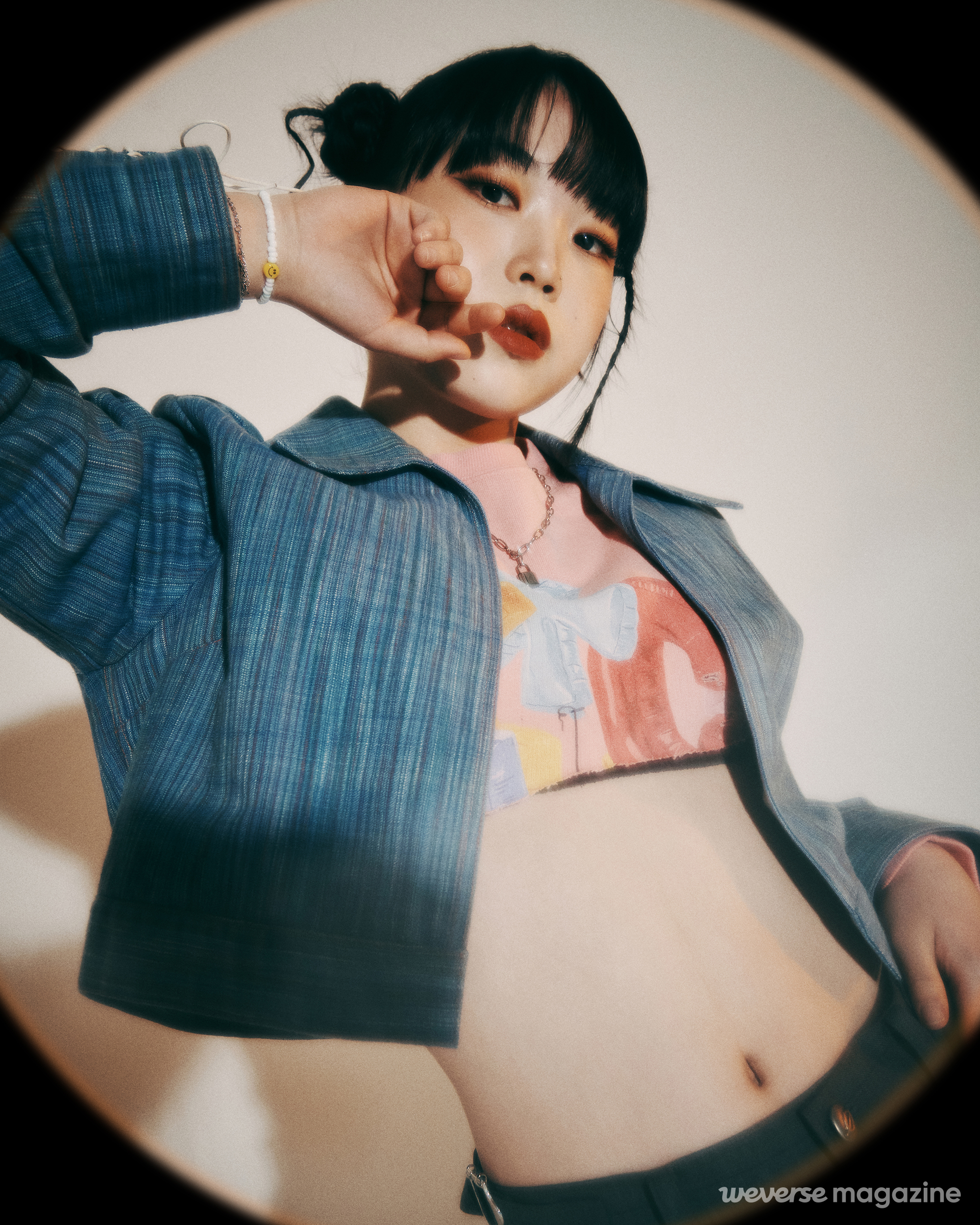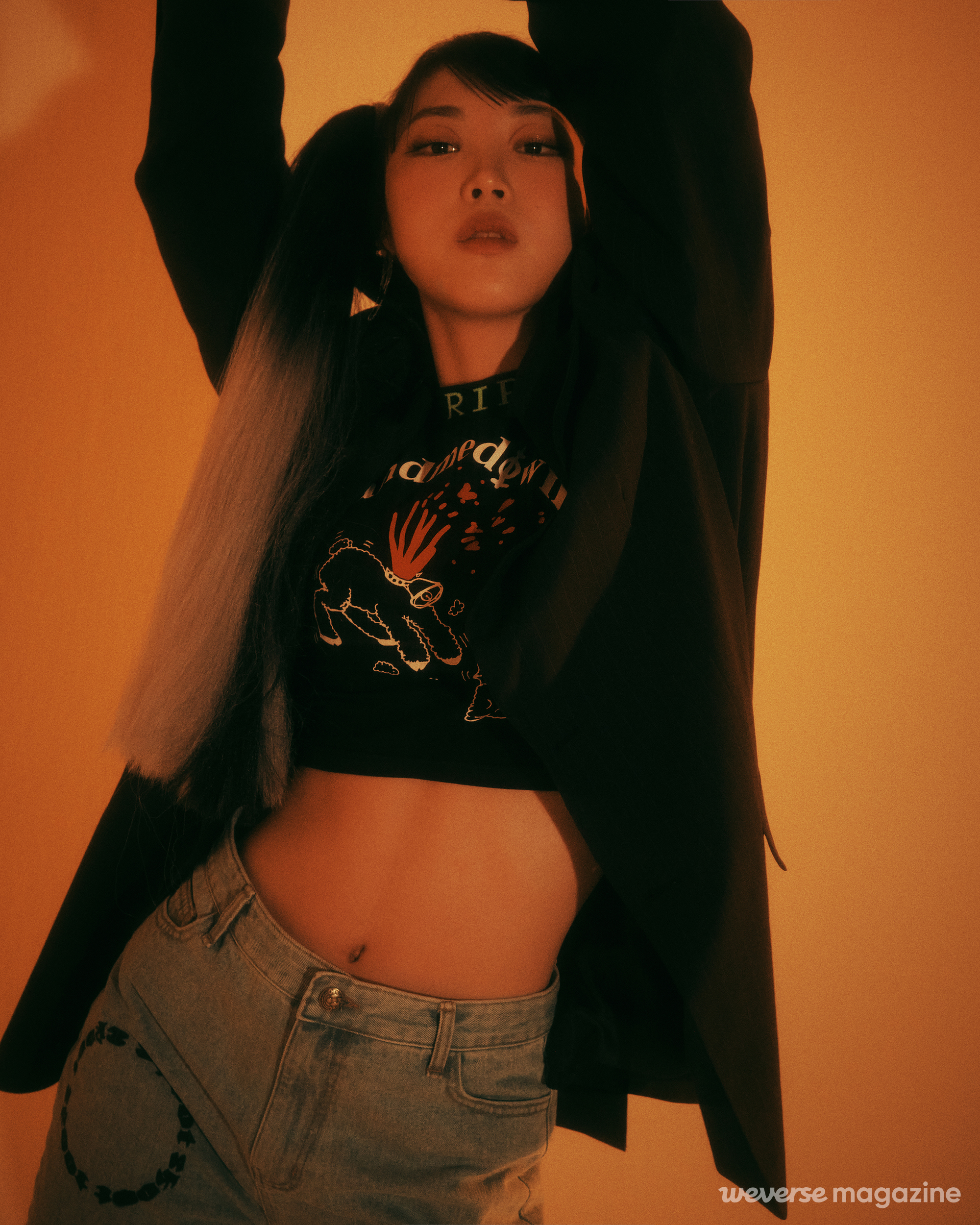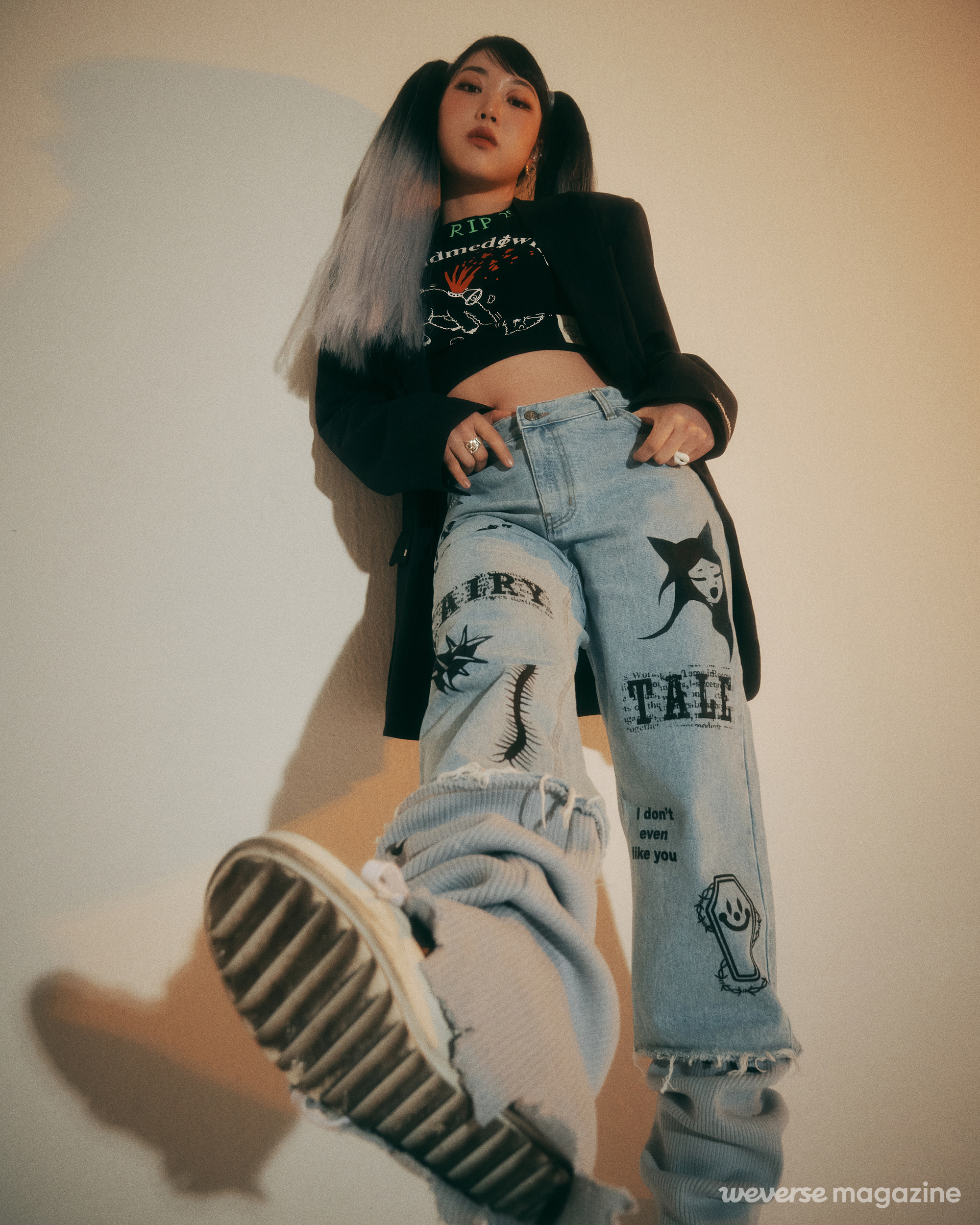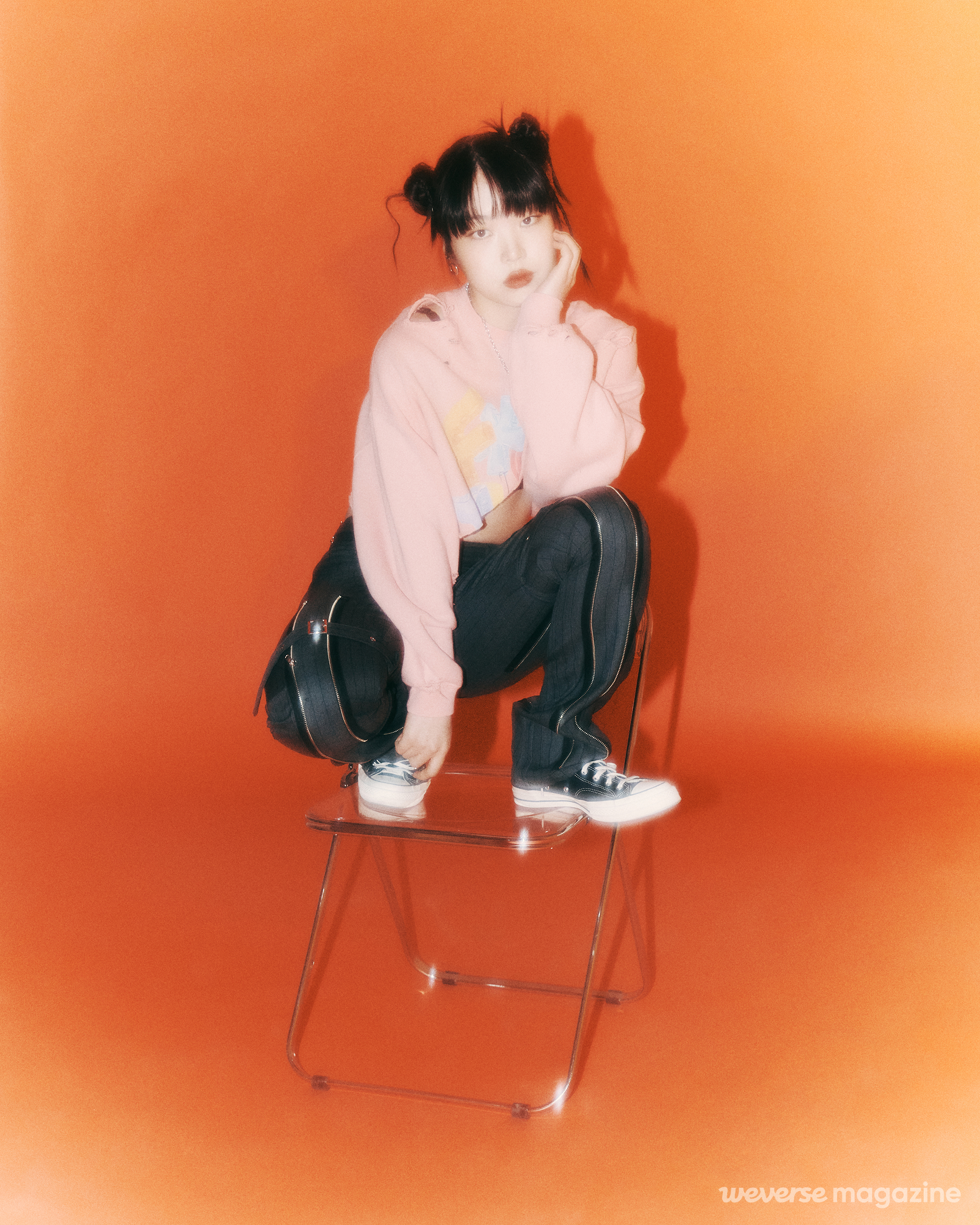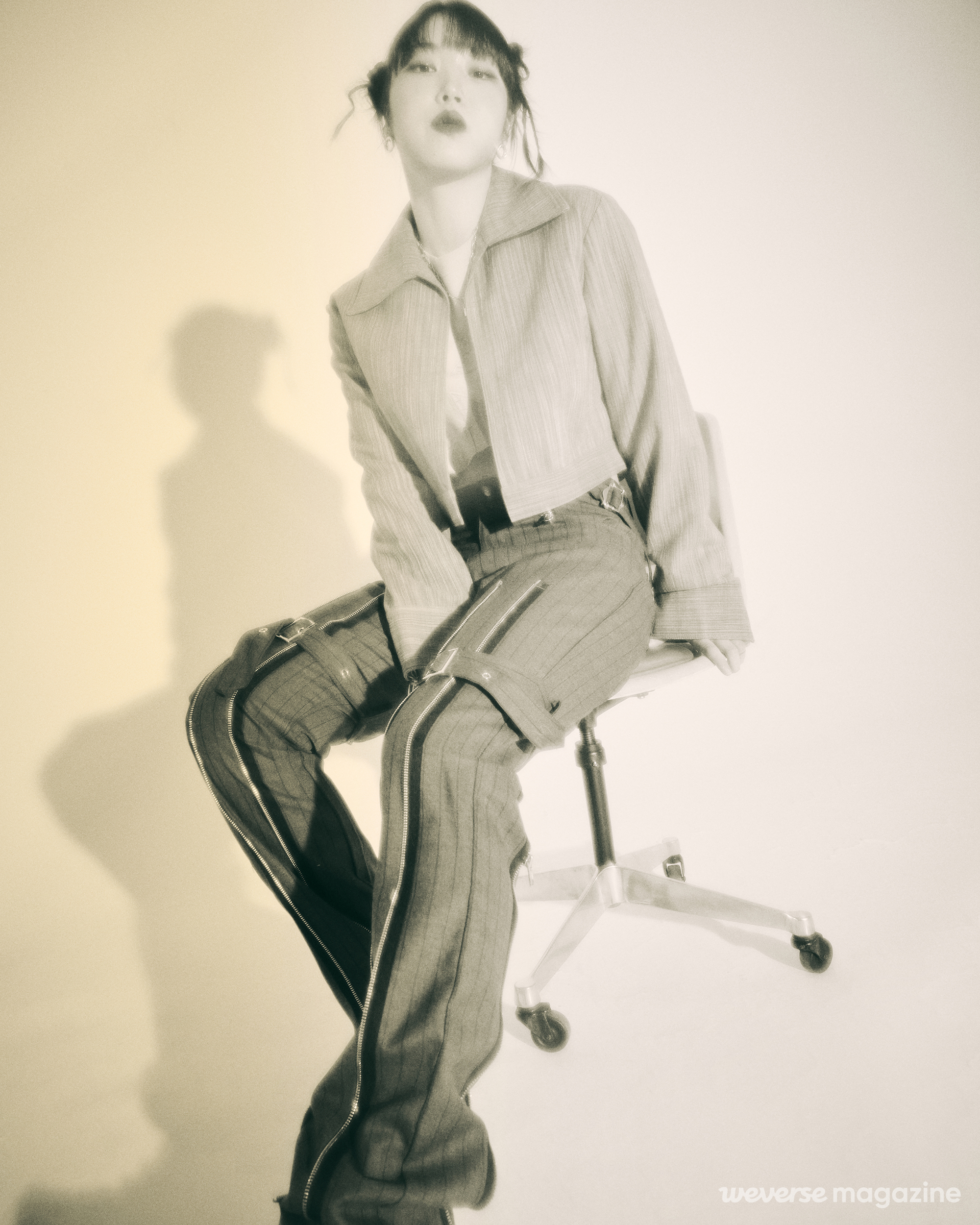You’re teaching at Just Jerk Dance Academy this year. What are you like when you’re teaching?
NAIN: I thought I would be really strict if I became an instructor. I thought I would be picky and blunt like I was on SDGF, but it turns out I am not. (laughs) I hand out a ton of compliments, and if they aren’t quite good enough, I guide them by saying, That’s good, but it might be better if you did it like this. Actually, that’s not what I do when I’m talking to myself, so I was surprised to see that was my teaching style. Anyway, they have to learn difficult choreography within a short period of time, but if their teacher is too serious, too, they’ll become really nervous and they will lose interest, so I’m trying to keep the class light and fun.
I get the impression your real personality is very different from what we see on TV.
NAIN: Well, SDGF was a competition show, so you had no choice but to be intense at all times. I am thorough when I work, but in normal life I feel like it is actually Heesoo who is thorough? I don’t want to have to draw a line between work and life, but I think it’s the right choice, given my personality. I don’t think I should follow my real personality when I’m working. (laughs)
NMIXX’s choreography for “TANK,” which you worked on before SDGF, has now been made public, and it was your first K-pop choreography proposal. Did you have any difficulties with it?
NAIN: My mind was actually all over the place for the first week after I heard that song. (laughs) The structure made it really hard to make choreography for. The song is unique and when I met their people they asked me to make choreography that would cause people to stop and wonder what they were looking at. Seeing as they were just debuting, I didn’t know each member’s dance style, so any choreography I made would become part of their style, so I was really careful as to how I would go about it. I tried to reflect the label’s requests as much as possible and looked at each member’s photo and thought, Maybe they would be good at something like this? (laughs) I imagined things that way while mapping out my ideas.
The use of legs and hips in the chorus is not the typical feeling you get from a girl group. It was very fresh. How did you come up with the idea for that?
NAIN: When I make choreography, I usually start with the feet. It is sort of like you bounce to the beat with your feet, then paint a picture with your hands. I usually express the music and the song just the way they are. Even though I was up almost every night making the choreography, I couldn’t nail down the choreography for the chorus even with three days left before the deadline. I kept agonizing over it and finally thought I should just make it up while goofing around with my friend. I thought I had to do that to break out of my normal style. I was dancing with my friend and all of a sudden I came up with a move where you pop your hips side to side. (laughs) I made it by alternatively rotating my hips left and right exactly in time with the rhythm. The result was a really unique dance, and I was really glad they did such a good job with it.
What is your approach when you create K-pop choreography? I imagine it’s important to compromise with your typical dance style in some places since you have to reflect the unique characteristics of K-pop and the specifics of the commission.
NAIN: Whenever people see a video of the rough version of my choreography, they say it looks just like the choreography I teach in class. That’s how close I stick to my own dance style when I choreograph for K-pop. If I only look at it as K-pop, I’ll end up with a dance routine totally different from what I do. I think that helps me reconcile the rigid ideas I have about K-pop choreography a little. And anyway, the people who commission me contact me because they saw my dance style and liked it, so that makes me think I should just do it my way. But it’s different from making one-person choreography, of course, because it is a big scene of a group of people moving. I have to get a feel for imagining seven people in front of me while I compose the choreography, and I think working on rough choreography with Leejung helped me develop that a lot. It helped me a lot with creating the big picture and composition overall.
I heard you got your start with dancing when you joined the A.YOUTH crew with your friend, but I also heard you were bad at dancing in the beginning.
NAIN: I was really bad at dancing, but no one believes me. (laughs) I first tried dancing when I was doing K-pop after school somewhere around fourth grade, and I was so bad at it that the other kids there made fun of me! (laughs) But I’m always really driven in everything I do. After I joined the [A.YOUTH] crew, I was determined to get first place in the new things I was trying out. When I saw my friends dancing, who were in a higher level than me at the time, I felt like I was really far behind and practiced to death with a goal to be better than them—practicing the basics I learned in class every night until late and on weekends, too. I danced my head off. I kept doing that until one day, after a performance, I reviewed the footage and I looked so happy dancing. That’s when it hit me: I should keep dancing.
You later joined the Just Jerk crew and dropped out of high school. That couldn’t have been an easy decision to make.
NAIN: I passed the auditions for Just Jerk around the end of my first year of high school and did around two months of that and school together, but the schedules didn’t line up and I couldn't concentrate on either, so I chose the crew. I’ve always had this firm belief that I have to have other people—a crew—to dance with. My personality makes it so that I don’t have fun when dancing alone and I can’t tell where I need improvement, so I thought I could only get better if I had someone there to keep me on top of my game. I was really shaken up at the time but I kept rationalizing it to myself: I can use this time to dance with people who are better than me. It’ll pay off later. After that, I was so focused on the crew that my friends felt like they never saw me. Training, performing, going to competitions. The only thing I remember is how the instructors I was working with were way above my level and my skills had been lacking for a long time and so the only thing I did every day was practice so that I wouldn’t stand out.
How did your parents react? Most people back then wouldn’t have had a great understanding of a career in dancing.
NAIN: Lucky for me, my parents have never said no to me—even when I was young—I was always with the crew and I went to an art high school, so the world of dance was never strange to me. If I told my parents I wanted to drop out just to avoid studying, they might have said no, but since I had a firm plan to be in a dance in a crew, they didn’t say anything about it and just supported me.
As the leader of TURNS, you must have struggled with quickly creating a sense of unity since you made the crew especially for SDGF.
NAIN: I spent a long time thinking about how to get the members of my crew to trust me in a short time because faith in the leader has to come first if you’re going to push through whatever comes your way together. I tried to always appear confident whenever I talked to them and I always had a plan C for everything for that reason. I wanted to get them to trust me by reflecting their opinions. So instead of saying no when they came up with an idea, I would say, That would be hard to pull off during this part, so let’s figure out how we can use it somewhere else.
You said you plan to stay with TURNS. What made all of you able to work so well together?
NAIN: I think that crews should stay together to the very end, so right from the very beginning I thought to myself that I would tell them that, even after SDGF ended, we should stick together. So right from when Heesoo and I were recruiting the others, we wanted to find people who were able to do that. Their dancing ability was important, too, but just because they were good at dancing didn’t mean they would be a good fit for the crew. We were looking for them to be kind overall but we also had to be very careful to find people who knew how to express their ideas clearly and were able to be receptive. They knew how to put themselves aside a bit and do what was best for the crew. So it didn’t require much effort to make into a united crew, to be honest. I’m not bragging, but I have a good eye. I’m thinking about becoming the president of an entertainment agency someday. (laughs)
TURNS had a fan meeting not long ago.
NAIN: I actually never wanted that time to come. It’s so important to me that I hate to see it pass by. Before I can really feel it. (laughs) I love interacting with fans, but I think the reason I felt that way was because I thought we might never get another opportunity like that again. I was wondering things like, What sort of emotions are they experiencing, sitting there in the audience? Do they really feel the same way I do when I’m stanning someone? (laughs) And all the while it was so meaningful to me to be standing there face to face with them. Dancers do not work within a formally structured system, so they have to make their choreographies, careers and everything else themselves. We need a lot of people by our side to boost our confidence in the process. When you’re alone and feel defeated, you might dive deep into that feeling. But I think the fans keep us from ever feeling that at all. It really gives me a lot of strength when they support us so much, both our dancing and in our personal lives. And I think that’s why I never worry about dancing. I don’t really worry about whether or not something will work and just go for it confidently.
What do you want people to see when they watch your dances?
NAIN: I would like it better if people never know exactly what my style is. As a dancer, I was worried about not having a specific style ever since I was young, so I focused on working on things I wasn’t good at. I figured if I don’t have my own style, I should at least be good at everything. I think that’s why I don’t want one particular style to come to mind when people think of me. I hope I can excel at any style, like a blank sheet of paper.
You said your dance motto is having fun, being healthy and dancing for a long time. What are you doing to make this happen?
NAIN: A dancer’s body is their asset, but things already start to get hard by your 30s. That’s why someone who dances for a long time without giving up has truly made it. So I’m always exercising and looking for new things related to dance that I can do—whether it’s a style of dance or something related to online content. No matter what kind of videos I make, they will always be related to dancing, so there is always a new dance challenge awaiting. That means a lot to me, too.
You became an adult this year. What kind of dancer do you think you will be in your 20s?
NAIN: Oh, yeah—I really am in my 20s now! (laughs) When I look back on my teenage years, I think I lived life to the fullest and worked endlessly. Even though I still have so many things left to experience, it feels like I went through all the things I could have experienced by my mid-20s all while I was still a teenager. (laughs) I guess I was daring to keep trying so many new things when I was a teenager, so I think I will try to dig a lot deeper in my 20s. I want to be confident and never set any limits for myself.
Unauthorized reproduction and distribution prohibited.
